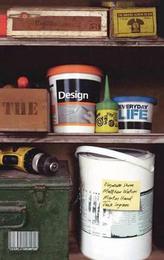
|
The Design of Everyday Life
Hardback
Main Details
| Title |
The Design of Everyday Life
|
| Authors and Contributors |
By (author) Elizabeth Shove
|
|
By (author) Matthew Watson
|
|
By (author) Martin Hand
|
|
By (author) Jack Ingram
|
| Series | Cultures of Consumption Series |
|---|
| Physical Properties |
| Format:Hardback | | Pages:192 | | Dimensions(mm): Height 234,Width 156 |
|
| ISBN/Barcode |
9781845206826
|
| Classifications | Dewey:645 |
|---|
| Audience | | Tertiary Education (US: College) | |
|---|
| Illustrations |
15 b&w illustrations, bibliography, index
|
|
Publishing Details |
| Publisher |
Bloomsbury Publishing PLC
|
| Imprint |
Berg Publishers
|
| Publication Date |
1 December 2007 |
| Publication Country |
United Kingdom
|
Description
How do common household items such as basic plastic house wares or high-tech digital cameras transform our daily lives? The Design of Everyday Life considers this question in detail, from the design of products through to their use in the home. Drawing on interviews with consumers themselves, the authors look at how everyday objects, ranging from screwdrivers to photo management software, are used on a practical level. Closely investigating the design, production and use of mass-market goods, the authors offer new interpretations of how consumers' needs are met and manufactured. They examine the dynamic interaction of products with everyday practices. The Design of Everyday Life presents a pathbreaking analysis of the sociology of objects, illuminating the connections between design and consumption.
Author Biography
Elizabeth Shove is Professor of Sociology at Lancaster University. Matthew Watson is Research Fellow in the Department of Geography at Durham University. Martin Hand is Assistant Professor of Sociology at Queen's University in Canada. Jack Ingram is Professor of Product Design at Birmingham Institute of Art and Design, UCE.
Reviews'This book uses the everyday artefact to break new intellectual ground for consumption studies, design analysis, and the field of material culture. Based on close empirical observation of social practice, it helps bring a new sociology of the artefact into being. It is creative, fresh, and original.' Harvey Molotch, New York University
|